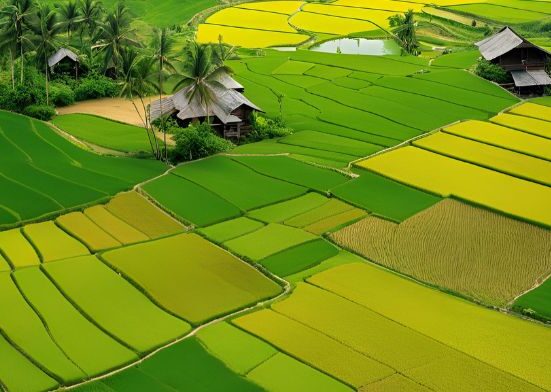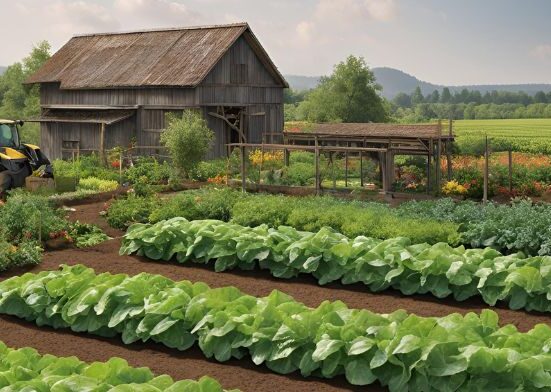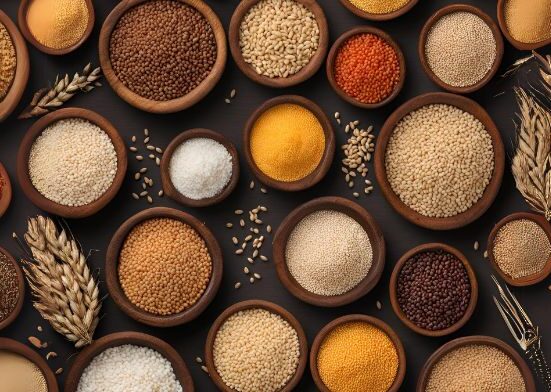Food is essential for human survival, yet it is also one of the most significant expenses for families worldwide. A complicated network of factors affects food prices, from global supply chains to local farming practices. modernfarmer plays a crucial role in shaping food costs, with innovations and challenges impacting both the price consumers pay and the sustainability of food production. The article will examine the variables that affect food costs, examine modern farming practices, and discuss how both are evolving to meet the demands of an ever-growing global population.
What is Modern Farming?
Modern farming refers to using advanced technology, techniques, and practices to increase efficiency, yield, and sustainability in agriculture. Unlike traditional farming, which relies on manual labor and basic tools, modern farming integrates innovations such as mechanized equipment, genetically modified crops, precision agriculture, and automated systems to optimize crop production.Precision agriculture uses data-driven methods, including GPS, Hydroponic Farming For Beginners sensors, and drones, to monitor soil health, irrigation needs, and pest control. These technologies allow farmers to apply resources like water, fertilizers, and pesticides more accurately, reducing waste and environmental impact. Genetically modified organisms (GMOs) are engineered to withstand harsh conditions, resist pests, and increase yields, offering solutions to food scarcity.
modfarm also incorporates sustainable practices, such as crop rotation, reduced tillage, and organic farming methods, to promote soil health and conserve resources. However, while these advancements help meet global food demands, they come with challenges like higher initial costs and environmental concerns, particularly regarding water usage and biodiversity loss.Modern farming aims to balance higher productivity with environmental responsibility, leveraging technology to address global food security while striving for sustainability.
Why Food Costs Matter

Before the COVID-19 pandemic, approximately one in eight Canadian households faced food insecurity, meaning over four million Canadians lacked sufficient access to the food they needed. Income is the primary factor influencing food insecurity, and even small changes in income can profoundly affect a family’s ability to purchase food. How Can Farmers Cut Waste in The economic impact of the pandemic only worsened this situation. The Canadian Centre for Food Integrity’s 2020 survey, Trends in Trust & The Path Forward, revealed that the rising cost of food became the leading concern for Canadians, with 51% stating they had less money for food because of COVID-19.
How Farmers and Modern Farming Practices Help Keep Food Affordable
Farmers face numerous challenges, including over 30,000 species of weeds, 3,000 diseases, and 10,000 plant-eating insects. Left unchecked, pests can destroy entire crops and threaten our food supply. Pest control products and biotech crops are crucial in preventing crop losses and ensuring a reliable, affordable food supply. Without plant science innovations, staple foods could rise by 45%, increasing the average Canadian household’s expenses by $4,500 annually.Climate change further exacerbates food affordability issues.Droughts and other extreme weather phenomena are occurring more frequently and with greater severity.
storms, and floods could reduce crop yields by as much as 50%. Milder winters lead to an increase in pests, weeds, and diseases, all of which pose a threat to food production. For example, a recent drought in California caused cauliflower prices to spike in Ontario, while a devastating hurricane in Florida led to a global rise in orange juice prices. What Are Cash Crops These instances illustrate how weather disruptions can directly affect food prices.The plant science industry addresses these challenges by developing crops resistant to heat, drought, and salinity. Innovations like precision farming and conservation tillage also allow farmers to reduce environmental impacts, such as greenhouse gas emissions while maintaining soil health.
Key Plant Science and Modern Farming Innovations
Thanks in part to plant science, Canadians Take advantage of some of the world’s lowest food prices. Innovations such as pesticides and biotech crops help provide access to safe, affordable, and nutritious food while allowing farmers to increase crop yields on less land, preserving natural habitats and biodiversity.Gene editing and genetic engineering allow for the creation of new crop varieties that enhance shelf life and reduce food waste. For example, traditional apples often go to waste due to bruising or browning, with nearly 40% of apples typically discarded. However, thanks to plant science, the non-browning Arctic Apple was developed. This apple maintains the same taste, texture, and crunch as conventional apples, Saltwater Farming with the added benefit of being more spoilage-resistant. Health Canada has confirmed that the Arctic Apple is just as safe and nutritious as its traditional counterpart.
Pesticides also play a critical role in reducing food waste in the field and after harvest. Globally, up to 40% of crops are lost yearly due to pests, diseases, and weeds. Without plant science, this loss would be significantly higher. Whether food is lost in the field or discarded at home, it affects food prices. It wastes the considerable time, labor, and resources invested in growing and producing that food, including the associated carbon footprint.Modern farming practices and plant science innovations are essential to ensuring food remains affordable and accessible despite climate change and growing global demand.
Different Farming Methods: Modern Approaches
modern farms practices have evolved to include various innovative methods that are both environmentally friendly and more efficient in food production. Here are some examples of farming practices used today:
Integrated Farming Systems
Some farmers combine crop and livestock farming on the same farm. The animals feed on the crops, while their manure provides natural fertilizer for the crops, What Is Agriculture creating a sustainable cycle of growth and waste recycling.
Slash-and-Burn Agriculture
Farmers cut down and burn trees in certain regions to clear land for crops. The fire enriches the soil with nutrients, reducing the need for additional fertilizers. Though effective for short-term soil improvement, this practice can have long-term environmental consequences.
Sustainable Modern Farming Innovations
The goal of contemporary methods is to maximize environmental impact while lowering food production. Some of these practices include:
Hydroponics
This method involves growing plants in water enriched with essential minerals instead of soil. Hydroponics uses less water, space, and fertilizer than traditional soil-based farming, producing healthier, larger plants.
Aquaponics
Aquaponics combines fish farmers mod and plant cultivation in a mutually beneficial ecosystem. While the plants filter and purify the water, the fish feces supplies the plants with nutrients. for the fish. This system reduces waste and water usage while consuming fish and crops.
Vertical Farming
Plants are cultivated on stacked levels in vertical farming. or on shelves, often indoors. This method optimizes space, reduces water and energy consumption, and allows for producing fresh, local food regardless of external weather conditions.
These modern farmer practices help increase food production sustainably, lessen waste and help create a more wholesome environment.
The Future of Food Costs and Farming Practices

Food security will become even more pressing as the global population grows. By 2050, the world’s population is expected to reach nearly 10 billion, placing immense pressure on agricultural systems. To feed this population, the amount of food produced worldwide will need to rise by around 60%. This will require significant advancements in farming practices and changes in the way food is produced, distributed, and consumed.
Innovations in agriculture, such as vertical farming, aquaponics, and lab-grown meat, hold promise for increasing food production in sustainable ways. Vertical farming, for instance, involves growing crops in stacked layers in controlled environments, reducing the need for large land expanses and minimizing water usage. Aquaponics combines aquaculture and hydroponics, allowing for the production of fish and vegetables in a closed-loop system with minimal environmental impact. Ab-grown meat sometimes referred to as cultured meat, is made in a laboratory by growing animal cells. Offering the potential to reduce the ecological footprint of meat production.
The challenge, however, will be ensuring that these technologies are accessible and affordable for farmers worldwide. In developed nations, the focus will likely be on improving efficiency and sustainability through automation and innovation. In developing countries, the focus may be on improving access to resources, such as water and technology, to help modern farmer magazine increase productivity while minimizing environmental impact.
Conclusion
Understanding food costs and modern farming practices is crucial to navigating the complex dynamics of global food systems. Various factors, including supply and demand, labor costs, transportation, government policies, and environmental considerations influence food prices. modern farm practices, from biotechnology to automation, have revolutionized food production, but they also come with challenges and ecological costs that must be addressed.
As the world faces the twin challenges of a growing population and climate change, the future of food production will depend on the ability to balance the need for increased food output with the demand for sustainability and environmental stewardship.Through changes in customer behavior or technological breakthroughs the evolution of food production will continue to shape the food costs we pay and the world we live in.
FAQ
What factors influence food prices?
Food prices are impacted by supply and demand, labor costs, transportation, weather events, government policies, international trade, and supply chain disruptions, affecting both production and consumer pricing.
How do supply chains affect food prices?
Supply chains determine the cost of transporting food from producers to consumers. Disruptions, fuel price changes, and delays in logistics directly impact food availability, leading to price fluctuations.
Why is labor important in food costs?
Labor costs are significant in farming operations, from planting to harvesting. Rising wages, labor shortages, and aging workforces increase food production costs, often higher consumer prices.
How does technology reduce food costs?
agricultural technology breakthroughs like precision farming,automation, and biotechnology, increase efficiency and lower input costs, reducing overall food production costs and benefiting consumers.
What environmental impacts does modern farming have?
Conventional farming can lead to soil erosion, water pollution, and deforestation. Sustainable practices, such as organic farming, aim to reduce environmental harm but often come with higher production costs.







